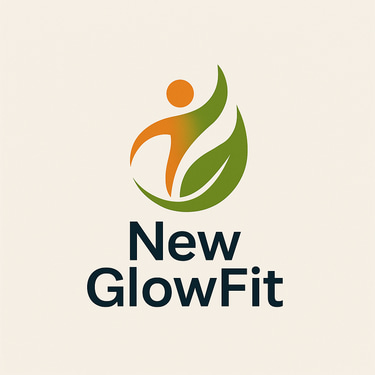How to protect your eyes from the sun: practical vision care tips
Learn how to protect your eyes from UV damage while walking, driving, exercising, or relaxing at the beach with simple, effective daily habits.
8/13/20253 min read


Sunlight is essential for life — but its ultraviolet (UV) rays can seriously harm your eyes. Whether you’re walking, running, driving, or spending a day at the beach, your eyes are constantly exposed to solar radiation. Without proper protection, this exposure can cause both immediate and long-term damage, affecting your vision over time.
Protecting your eyes isn’t just about comfort — it’s a matter of health and prevention. This guide will show you how to keep your vision safe in different situations, with practical and reliable tips that fit easily into your routine.
Why the sun can be harmful to your eyes
Ultraviolet (UV) radiation penetrates the eye’s delicate structures and can cause cumulative damage. Even on cloudy days, up to 80% of UV rays pass through clouds.
Major risks of sun exposure without protection:
Photokeratitis: a painful “sunburn” on the cornea.
Premature cataracts: early clouding of the lens caused by UV damage.
Macular degeneration: retinal deterioration that may lead to central vision loss.
Pterygium: abnormal tissue growth on the white part of the eye.
Photophobia: increased light sensitivity.
💡 Quick tip: Just as we use sunscreen for our skin, our eyes also need protection from UV rays.
1. Outdoor activities: protecting your eyes while walking or exercising
Outdoor workouts expose your eyes to continuous sunlight — often more than you realize.
Essential care:
Choose UV400 sunglasses, which block 99–100% of UVA and UVB rays.
Wear a hat or visor to reduce direct sunlight.
Avoid peak sun hours (10 a.m. to 4 p.m.).
Opt for wraparound sunglasses if you cycle or run to prevent side glare.
Investing in a certified pair of sunglasses is a one-time decision that protects your eyes for years.
2. Eye protection while driving
Bright sunlight and glare can reduce visibility and increase the risk of accidents.
Safe driving tips:
Polarized lenses minimize glare from roads, cars, and water.
Adjust your car’s sun visor to block direct rays.
If you wear prescription glasses, consider photochromic lenses that darken in sunlight.
Keep your windshield clean to prevent reflections and visual distortion.
Remember: protecting your eyes while driving protects everyone on the road.
3. Protecting your eyes at the beach or pool
At the beach or pool, sunlight becomes even more intense because of reflections from water and sand.
Key precautions:
Always wear UV-protected sunglasses with dark, certified lenses.
Avoid direct exposure during peak hours.
Use wide-brimmed hats for extra shade.
For contact lens users, choose UV-filtering lenses for additional protection.
Avoid staring at sunlight reflected on the water’s surface.
If you love spending time by the sea, think of your sunglasses as part of your essential beach kit — just as important as sunscreen.
4. Eye protection for children and teenagers
Children’s eyes are more sensitive to UV rays, and early exposure can have long-term effects on eye health.
How to protect kids:
Choose UV-certified sunglasses made specifically for children.
Encourage wearing hats or visors during outdoor play.
Build the habit early — make sunglasses a natural part of outdoor activities.
💡 Golden rule: Teach your child to wear sunglasses just as they learn to apply sunscreen.
5. Myths and facts about eye protection
Myth: The darker the lens, the better the protection.
Fact: Lens color doesn’t determine UV protection — certification does.
Myth: Cheap or fake sunglasses work the same.
Fact: Unfiltered lenses let more UV rays in, dilating the pupil and increasing damage risk.
Myth: Sunglasses are only for summer.
Fact: UV rays are present all year long — even on cloudy days.
6. Choosing the right sunglasses
When selecting your next pair, look for:
UV400 protection (blocks both UVA and UVB rays).
Quality certification from a reliable manufacturer.
A frame that fully covers the eyes and sides.
Polarized lenses to reduce glare.
Lightweight, comfortable materials for everyday wear.
A good pair of sunglasses is an investment in your health, not just your style.
7. Daily habits for long-term eye health
Protecting your eyes from the sun is just one part of overall eye care. Maintain healthy habits daily:
Eat foods rich in vitamins A, C, E and omega-3 (carrots, leafy greens, citrus fruits, salmon).
Stay hydrated to prevent dry eyes.
Schedule regular eye exams to monitor vision and detect early changes.
Avoid rubbing your eyes with unwashed hands.
Conclusion
Protecting your eyes from the sun goes far beyond comfort — it’s an essential step in preserving your vision for life.
Simple daily actions, like wearing proper sunglasses, avoiding peak sunlight, and protecting children’s eyes, make a lasting difference.
Remember: vision is one of our most precious senses, and prevention is the safest way to preserve it.
Start today: choose UV-certified sunglasses and make them your trusted companion for every outdoor activity — your eyes will thank you.
Health
Tips for a healthy and balanced life.
© 2025. All rights reserved.
Well-being
Privacy Policy
Terms and conditions
